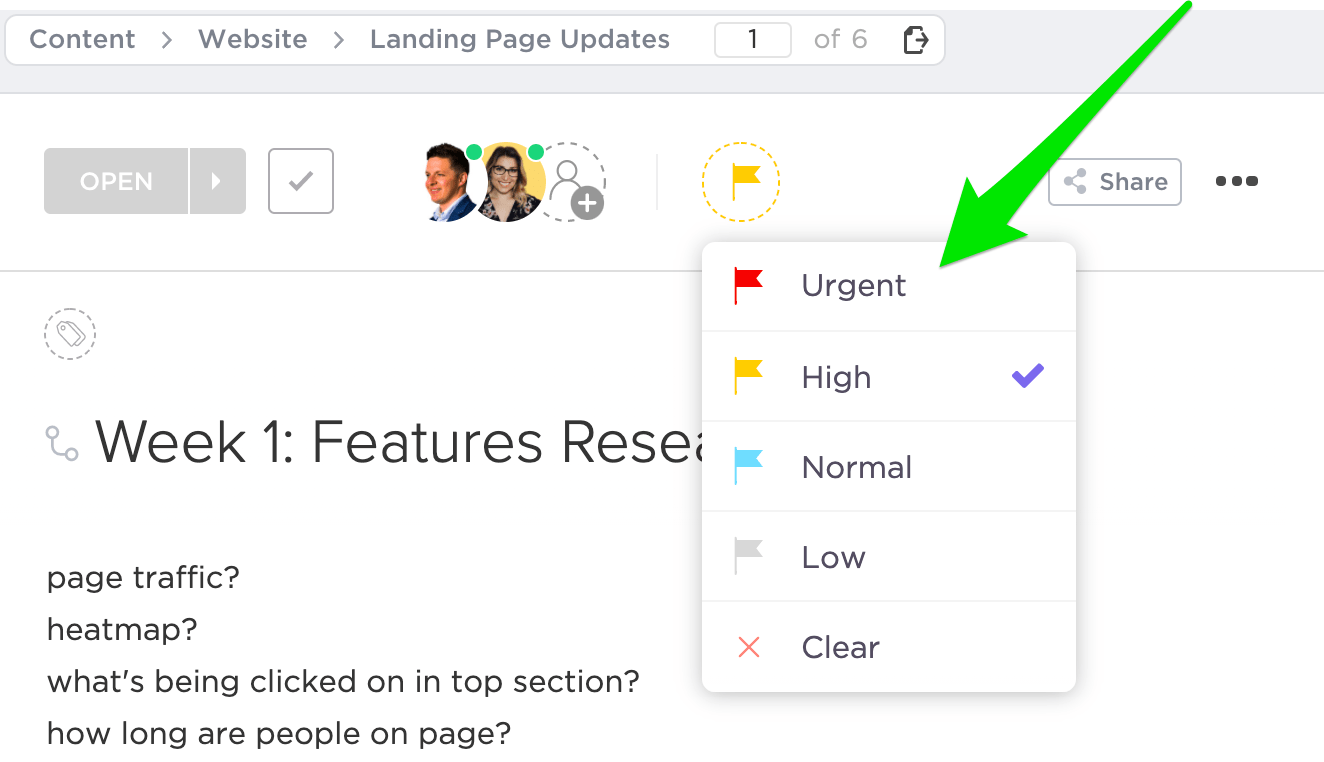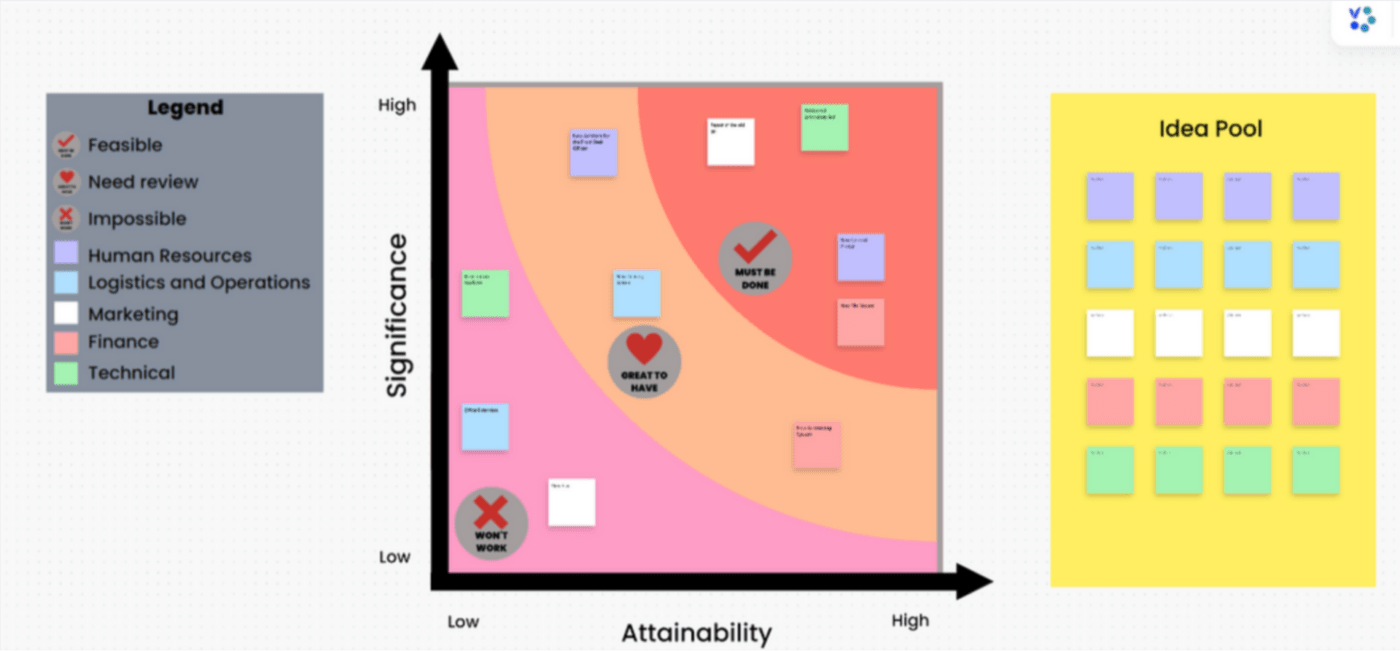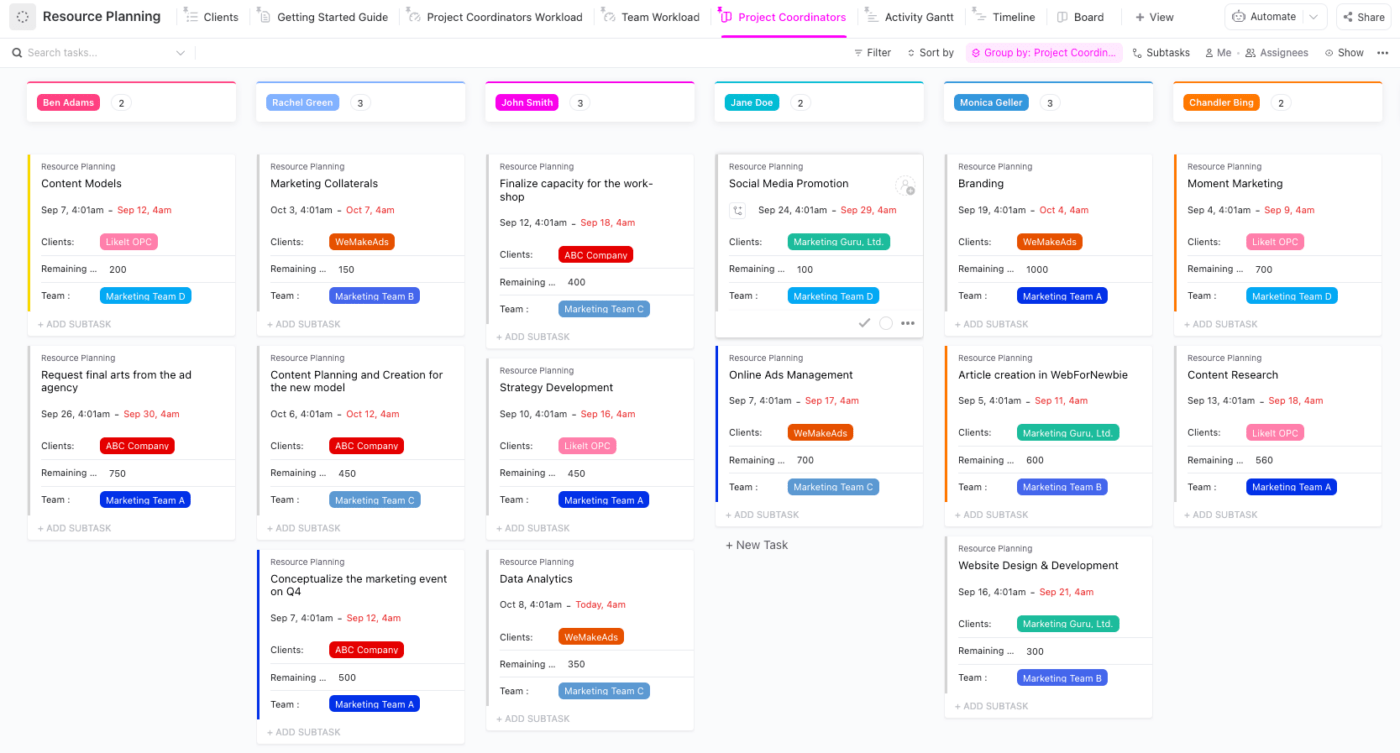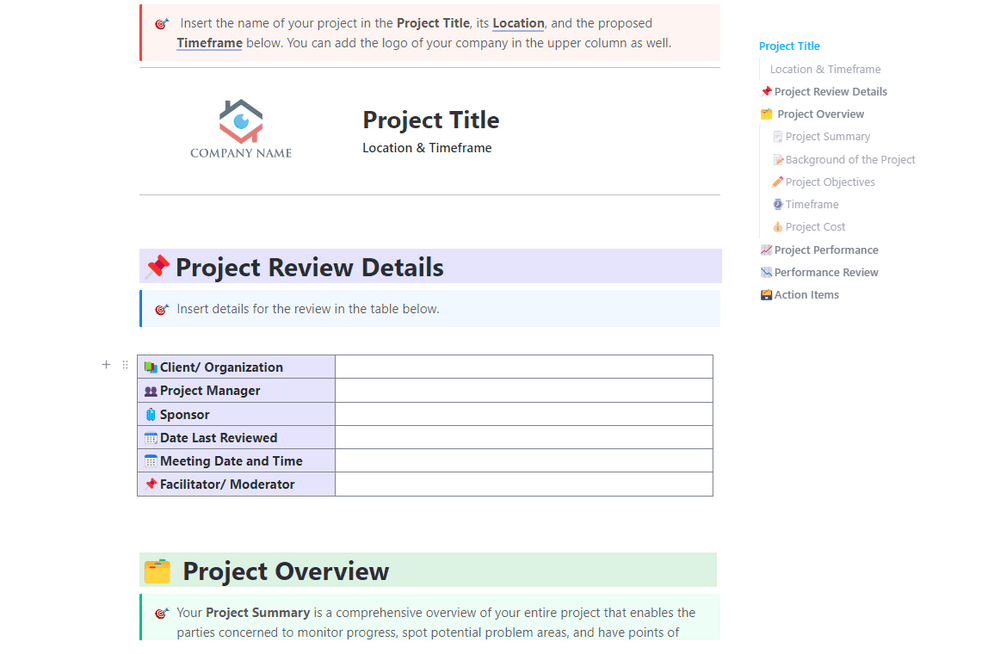إن تحديد أولويات العمل في أفضل حالاته يعني أن كل شخص في فريقك يقضي وقته وطاقته في مشاريع عالية الأداء.
من المغري القفز إلى المهام وإنجاز أكبر قدر ممكن منها. ولكن كلما قمت بتقييم المشاريع من منظور قيمة الشركة، كلما اتخذت قرارات أفضل لبناء ثقافة العمل الملهم
وفي عالم إدارة المشاريع سريع الوتيرة، يؤدي العمل الملهم إلى حل المشاكل بطريقة مبتكرة وتحقيق نتائج ناجحة. وبحلول عام 2027، سيكون من الصعب على أصحاب العمل إيجاد 87.7 ملايين موظف متخصصون في وظائف إدارة المشاريع! 🌐
بروح الشفافية الكاملة للمشروع إن تحديد أولويات المشاريع أسهل قولاً من فعله. لا يتوفر لقادة المشاريع، وخاصة الفرق التي ليس لديها مديرو مشاريع، فترات زمنية غير متقطعة في جدولهم الزمني لمراجعة طلبات المشاريع الجديدة مقابل العمل الجاري حاليًا.
إذن كيف يمكننا تركيز وقت وطاقة فريقنا على المهام الصحيحة؟
سوف نلقي نظرة على أفضل النصائح مثل تجميع المشاريع المتشابهة لزيادة الوقت إلى أقصى حد، والتعامل مع المحادثات الصعبة مع أصحاب المصلحة الرئيسيين، وإعادة التوازن في عملية التفويض.
استخدم هذا الدليل كمصدر إلهام لك للحصول على الموارد والنماذج. أو كبداية للمحادثات مع فريقك للقيام بخطوات استراتيجية في عملية تحديد أولويات المشروع في فريقك!

ما هو تحديد أولويات المشروع؟
تحديد أولويات المشروع هو عملية اختيار المشاريع الأكثر أهمية بالنسبة للمؤسسة للتركيز عليها، بالنظر إلى الموارد والوقت المتاح. وتتضمن هذه العملية تقييم كل مشروع محتمل بناءً على معايير مثل تحقيق الأهداف التنظيمية والفوائد المتوقعة والتكلفة والمخاطر.
بعد كل خطة المشروع يقوم صانعو القرار بترتيب المشاريع حسب الأولوية ومقارنتها بالموارد المتاحة. تساعد هذه المقارنة على تسليط الضوء على أي مفاضلات محتملة بين المشاريع وتساعد على تحديد أولويات المهام التي من المرجح أن تحقق الرؤية الاستراتيجية للشركة. كما أنها تقوم بتصفية المهام غير ذات الصلة لحماية النطاق الترددي لفريقك. 👥
اكتشف المزيد_
_/مرجع/ https://clickup.com/blog/time-management-tips// نصائح لإدارة الوقت %/%href/_
!

تحديد الأولويات المشاريع والمهام باستخدام الأربعة مستويات الأولوية في ClickUp
توفر أنظمة تصنيف المشاريع هيكلاً يمكن التنبؤ به لتحليل ومقارنة أولوية كل مشروع وأهميته وتأثيره المحتمل. وهذا يضمن توجيه الموارد نحو إنجاز المهام التي تعود بأكبر فائدة على العمل.
كما يساعد تصنيف المشاريع أيضًا فرق العمل على وضع أهداف واقعية لكل مشروع، وتتبع التقدم المحرز في كل مشروع، والمساعدة في ضمان أن كل عضو من أعضاء الفريق يعمل على شيء مهم.
لماذا يعتبر تحديد أولويات المشاريع مهمًا؟
إن وجود خطة وتحديد الأولويات أمر ضروري لنجاح الأعمال بشكل عام. عندما نحدد أولويات مشاريعنا، يمكننا التركيز على المهام الأكثر أهمية أولاً والتأكد من عدم إهمال أي شيء.
كما أنه يساعدنا على البقاء منظمين وفعالين! نتجنب المماطلة والتشتت وتعدد المهام، مما يتيح لنا العمل بذكاء وإنجاز المزيد من المهام في وقت أقل.
قد يكون تحديد أولويات المشاريع أمرًا صعبًا. ولكن مع الجهد التعاوني والتخطيط الاستراتيجي، يمكننا التأكد من إنجاز مشاريعنا في الوقت المحدد وبنتائج رائعة. 📈
تعرف على المزيد عن كيفية إدارة مشاريع متعددة !

قم بإدارة جميع جداولك الزمنية ومراحل الإنتاج في مكان واحد باستخدام طريقة عرض قائمة ClickUp
_تحقق من أمثلة وقوالب إدارة المشاريع !
5 نصائح عملية لتحديد أولويات المشروع
استخدام استراتيجيات لتحديد أولويات المشاريع هو جزء مهم من إدارة المشاريع ويمكن أن يساعدنا على أن نكون أكثر إنتاجية بطرق متنوعة فردية وجماعية. إن تحديد أولويات المهام بناءً على الأهمية والإلحاح والتأثير سيساعد جميع المعنيين على التركيز على المهام الأكثر أهمية أولاً. ⚡️
بالإضافة إلى ذلك، يمكن للفرق استخدام تحديد الأولويات لتحديد الاختناقات المحتملة والتخطيط المسبق لمعالجتها. سيؤدي ذلك إلى تسليط الضوء على المواقف وسير العمل التي تستنزف الإنتاجية. سيساعد ذلك الفرق على التخطيط بشكل مناسب وتجنب الاندفاع والفوضى في اللحظة الأخيرة.
فيما يلي خمس نصائح لتحديد أولويات المشاريع والحصول على أقصى قيمة من الجدول الزمني للمشروع !
نصيحة رقم 1: استخدم مصفوفة تحديد الأولويات
تحديد الأولويات مصفوفة عبارة عن مخطط أو رسم بياني تستخدم للمساعدة في ترتيب المهام أو مقارنة العوامل من أجل تحديد أولوياتها. وتتكون عادةً من محورين: محور ص عمودي ومحور س أفقي.
يمثل المحور ص عادةً العوامل أو المهام التي تحتاج إلى تحديد أولوياتها، بينما يمثل المحور س عادةً مقياس الأهمية أو الإلحاح .
على سبيل المثال، يمكن للمحور ص أن يسرد مهام مثل تحديث صفحة تسجيل الدخول، و تحديث الشعار، و إنشاء قوالب اجتماعية للعلامة التجارية, بينما يمكن أن يمثل المحور س مقياسًا من 1 (أولوية منخفضة) إلى 5 (أولوية عالية).
إذا لم تكن قد استخدمت نظام تحديد أولويات المشروع من قبل، فجرّب قالب مصفوفة تحديد الأولويات في ClickUp ! سيرشدك قالب السبورة البيضاء هذا إلى أفكار التصميم والوظائف لرسم مشاريعك القادمة. 🎨

تنظيم المشاريع ذات الأولوية القصوى على لوحة ClickUp البيضاء
/ctaBtn/purple https://app.clickup.com/signup?template=t-200542037&\_ga=2.120106826.350072845.1677294417-1377431993.1674876802 تنزيل هذا القالب /%ctaBtntn/
اكتشف المزيد قوالب مصفوفة من ClickUp وPowerPoint !
نصيحة رقم 2: تصفية جميع طلبات المشروع في أداة إدارة المشروع
هل يمكنك حساب عدد الأدوات في مجموعة أدواتك التقنية؟
سؤال متابعة: _هل كل هذه الأدوات هي مداخل لإغراق فريقك بالطلبات؟
بغض النظر عن الملهيات، فإن استخدام قنوات متعددة لـ التقاط تحديثات المشروع هي أسرع طريقة للتسبب في تكرار العمل. 🔂
باستخدام نماذج ClickUp، أنت تنشئ حواجز حماية رقمية لحماية فريقك من التورط في وقت مبكر جدًا في "مرحلة الاكتشاف" من المشروع. مرحلة الاكتشاف هي عندما لا يكون مقدم الطلب قد قدم استراتيجية وهدفًا ونتيجة قوية لبدء العمل.
مكافأة:
أدوات تحديد الأولويات

تصفية طلبات المشاريع إلى مدير المشروع باستخدام نموذج ClickUp التقديمي
استخدم هذه المطالبات لتصميم نموذج يلبي احتياجات فريقك الخاصة لتقييم المشروع:
- هل هناك أي مواد مرئية موجودة (صور، رسوم بيانية وشعارات وغيرها) تحتاج إلى استخدامها في المشروع؟
- هل هناك أي أجزاء محتوى موجودة (كتابات، تقارير، استبيانات، نتائج دراسة، إلخ) تحتاج إلى استخدامها في المشروع؟
- كيف سيتم قياس النجاح؟ ضع قائمة بمؤشرات الأداء الرئيسية ومؤشرات الأداء الرئيسية ذات الصلة بالشركة.
- هل لديك قائمة بالرسائل أو النقاط الرئيسية التي سيتم تضمينها في المشروع؟
- هل هناك أي قيود أو اعتبارات تقنية يجب أن تكون على دراية بها؟
- هل هناك أي إرشادات أو جماليات للعلامة التجارية يجب مراعاتها؟
- هل هناك أي لوائح قانونية أو معايير امتثال يجب الوفاء بها؟
- هل هناك أي محتوى أو مرئيات يجب استبعادها من المشروع؟
- ما هي الأهداف الاستراتيجية لهذا المشروع؟
- ما هو الجدول الزمني والميزانية المخصصة للمشروع؟
- من هو الجمهور المستهدف لهذا المشروع؟
- من هم أصحاب المصلحة في المشروع؟
- متى تحتاج إلى تسليم هذا المشروع؟
- هل هذا المشروع جديد أم محدث؟
نصيحة قم بتمكين فريقك من إعادة توجيه الطلبات المخصصة إلى نموذج النقر فوق . يمكن لأي شخص لديه رابط للنموذج إرسال الردود التي يتم توجيهها تلقائيًا إلى مساحة عمل فريقك للمراجعة المناسبة!
نصيحة #3: قم بتجميع المشاريع المتشابهة في سبرينت واحد
يعد تجميع المشاريع المتشابهة طريقة فعالة لـ زيادة كفاءة العملية . تكمن الفكرة في إنشاء مجموعات مشاريع حيث يمكن مشاركة المهام والأفكار بسهولة بين أعضاء الفريق، بالإضافة إلى الموارد والخبرات. 🧑💻

تحديد أولويات المشاريع في عرض لوحة ClickUp Board بالسحب والإفلات
سبرينت هو أحد أحداث أجايل المستخدمة لتحديد فترة زمنية يجب خلالها إكمال مجموعة محددة من العمل.
عادةً ما تكون مدة السبرينت أسبوعين لفرق تطوير البرمجيات، ولكن يمكن أن تكون أي فترة زمنية محددة، اعتمادًا على الفريق واحتياجات المشروع. خلال فترة السبرنت، تقوم الفرق بتقسيم المهام الفردية وتعيينها لأشخاص محددين لإكمالها. في نهاية السبرنت، تقوم الفرق بمراجعة التقدم المحرز والانتقال إلى السبرنت التالي.
من المزايا الأخرى هي معالجة المشاريع التي لا تستغرق وقتاً طويلاً - المشاريع التي تحافظ على سير العمل - لتحقيق أقصى قدر من الوقت
نصيحة رقم 4: قل لا للمشاريع خارج نطاق عمل شركتك
تنظيم طلبات المشاريع على أساس قيمة العمل يعني ترتيب أولوياتها وفقًا لإمكانية العائد على الاستثمار (العائد على الاستثمار) للمشروع وتأثيره على عمليات الشركة.
يتم تحديد قيمة الأعمال من خلال تحليل تكاليف وفوائد المشروع من حيث الوقت والموارد والأرباح. سيتم وضع المشروع ذو العائد المتوقع المرتفع في مرتبة أعلى في القائمة. على سبيل المثال، إصلاح مشكلات الإنتاج الرئيسية أو معالجة شكاوى العملاء.

مقارنة طلب مشروع ما مع محفظة مشاريع الشركة لتحديد الأولوية
من خلال الأخذ بعين الاعتبار عوامل مثل رضا العملاء، والتأثيرات قصيرة الأجل وطويلة الأجل، والمزايا التنافسية، يمكن للشركات تحديد المشاريع الأكثر قيمة لأهداف أعمالها.
نصيحة رقم 5: تفويض العمل المناسب للأشخاص المناسبين
في بعض الأحيان نُسند جميع المهام دون وعي منا إلى مطور أو مصمم أو منسق معين لأنهم بارعون للغاية. إن جودة عملهم وموقفهم الذي يمكنهم القيام به يجعلهم نقطة جذب لإنجاز المهام المتتالية.
ولكننا نهتم بتحديد أولويات المشاريع، وهذا يعني أيضًا التخطيط مع وضع قدرات فريقنا على العمل والنمو في الاعتبار. 🌱

تعيين المشاريع والمهام المستقبلية باستخدام طريقة عرض عبء العمل في ClickUp
قد لا يكون هذا المصمم أو المطور أو المنسق أفضل شخص للمهمة. هناك احتمالات أن يكون بإمكانهم قضاء وقتهم وطاقتهم في مشاريع أخرى لتنمية عضلاتهم الإبداعية ومنع الإرهاق واكتساب المزيد من الخبرة في إنجاز أعمال عالية المستوى.
لذلك عندما تقوم بتفويض المهام، استخدم مواهب كل فرد في فريقك لخلق شعور بالملكية وبناء الفريق. ونتيجة لذلك، سيكون لديك عملية أفضل لإدارة أعباء العمل!
اجعل الإنتاجية أولوية قصوى مع ClickUp
جرّب ClickUp واختبر التغييرات الإيجابية التي يمكن أن تحدثها في إنتاجية فريقك. تمنحك منصتنا الأدوات اللازمة لتنظيم عملية تحديد أولويات مشروعك المثالية. بنقرات قليلة فقط، يمكنك البدء بالصورة الكبيرة وتكبير تفاصيل أي مهمة. إنشاء حساب مجاني على ClickUp اليوم وابقَ نشيطًا في العمل الذي أمامك. إذا كنت بحاجة إلى أي دعم، يرجى التواصل معنا من خلال مركز المساعدة أو اطلع على أي من ندوات عبر الإنترنت عند الطلب .
تخطيط سعيد! 💜

